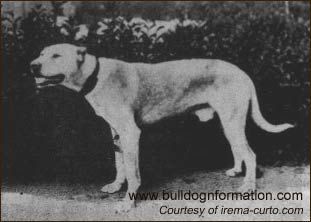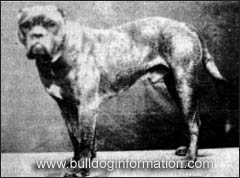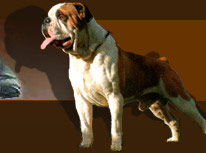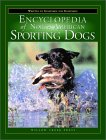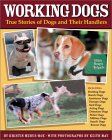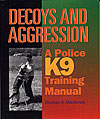Similarly to the American Bulldog you have breeders who have interbred the two types and others, especially in Spain, who prefer the bully-type, and regard their Perro de Toro as distinct from the Alano.
In this article, however, we will further consider de Perro de Toro and Alano as being one and the same breed.
The Ca de Bou and the Perro de Toro are two different dogs alltogther. The perro de toro is a bulldog type of alano espanol while the ca de bou or Presa mallorquin is a dog that, just like the presa canario, orginated from the alano espanol and the now extinct Cordoba fighting dog, the latter being also central in the creation of the dogo argentino.
Some dog historians believe that the Spanish Bulldog and Dogue de Bordeaux were closely related. While both breeds are a genetic legacy of the ancient Molossers of central Europe, the confusion probably stems from the fact that Spanish bulldogs were also known as 'Dogo de Burgos', Burgos being a city in Northern Spain founded in 884, not at all related to the French city of Bordeaux. See bulldog history.
History, Origin and Etymology
It is thought that the term "alano" stems from the Alans tribe's name (Alanoi in Greek and Alani in Latin), The Alans once ruled a vast territory stretching from the Caucasus to the Danube, but were gradually driven westwards by the invading Huns. They settled in the Byzantine Empire and Western Europe, playing a vital role in the subsequent development of Europe, even though their importance in medieval Europe has not always been given the credit is deserved, as notes Dr. Basirov. Rostovtzeff, the great Russian expert in Iranians of the steppes, once complained that "In most of the work on the period of migrations, the part played by the Sarmatians and especially by the Alans in conquest of Europe is almost ignored; but we must never forget that the Alans long resided in Gaul, that they invaded Italy, and that they came with the Vandals to Spain and conquered North Africa". A famous breed of medieval hunting dogs was called Alan (med. Latin Alanus) which, according to a 19th century authority on the history and origin of canine breeds, G. R. Jesse, "derived originally from the Caucasus, whence it accompanied the fierce, fairhaired, and warlike Alani". Apart from their steppe tactics of warfare, Alans are also credited with teaching western Europeans the still popular sport of hunting on horseback with hunting dogs. These dogs were a giant, massive breed of hunting and fighting dogs, which came to be known as Alanos in Iberia. They were traditionally used in boar hunting and cattle herding. According to a 19th century authority on the history and origin of canine breeds these Alans, "derived originally from the Caucasus, whence it accompanied the fierce, fairhaired, and warlike Alani". The town of Alano in Spain to this day bears two Alan dogs on its coat of arms.
Late fourteen century writings of the third Comte de Foix, more commonly known as Gaston Phoebus, lists in his Book of hunting the dogs in current use at that time: the Alan Gentil, Alan Viature and Alan de Boucherie. He notes that the Alan Gentile are; "They who by their strenght and stature can do more harm than any other breed", and later; "Alans are prickly, and nasty tempered, although giddier and madder than any other kinds of hounds. For a good Alan must gallop on like a greyhound and when he has got up to his game , he must let his teeth in and not let go".
Alan dogs were probably introduced in England by the Normans. When the laws of Canute were made in 1016, the Alan is not mentioned. In Gaston Phoebus writings the Alans areclearly described as being distinct from the Mastiff.
Other early writers describe the Alan as a large, strong, thick headed, short muzzled dog. The term Alan/Alaunt was probably also used to describe other breeds that, though similar to the Alaunt, had a different background, a common practice at a time when function and working ability were more important thatn conformation to morphological breed characteristics. Of course, this practice makes it even harder to determine which discriptions are indeed referring to the original Alaunt.
In Spain the breedname have survived up to modern times in the word Alano. However, today's Alano Espanol bears little resemblance to the ancient Alano, which was probably more like a Great Dane.
The 20th Century was disastrous the Alano in Spain. The dogs were crossbred with other breeds such as the boxer and mastiff to the point that the Spanish Alano was considered to be completely extinct. As the Spanish Alano was less and less needed for work, in the middle of the 20th Century, due to modernization and changes in bovine cattle management practices and, also, the abandonment of traditional ways of hunting techniques that required this dog, together with, much longer before, the banning of the Spanish Alano participation in the bullfights in the 1870´s, just a few stable, but isolated populations subsisted, confined to a group of valleys in the North of Spain (Encartaciones) where the way of using dogs at every day work has not changed much in the past centuries.
The Presa Canario and Ca de Bou faced a similar development. However, ancient attack dogs were preserved in Cantabria, in Salamanca, in the Basque country (Biscay), and in the neighboring Valley of Llera (Burgos), in Huelva and in Extremadura.
A group of dedicated dog specialists decided to restore the breed in the 1980's, using numerous dogs from these areas. They established a foundation stock for a breeding program that saved the Spanish alano from extinction, achieving homogeneity in type and temperament, conditions that are essential to consolidate a breed. These dogs were special due to the intelligent way in which they worked the cattle: they knew how to bite in places that would not cause any harm, applying just the force that was needed, nothing more, and most importantly, refraining from shaking their head so typically seen in other breeds and which unnessary hurts the calves and causes unnecessary exhaustion when facing heavy-weight cows, and finally, the very rapid recuperation both physical and psychological.
Today, the Spanish Alano breed is fully restored and has a stable, growing population. The stud book of the Spanish Alano has more than 400 individuals registered, and 250 of those are alive.
The stud book in which litters are registered will be handed to the RSCE, which is the Spanish Delegation of the FCI, together with documentation pertaining to all activities performed by ANCAE (National Association of Spanish Alano Breeders) in order for the RSCE to offcially recognize the breed, after this step has been taken by the RSCE, the next one will be that the FCI will recognize the breed internationally. A group of ANCAE members are forming a new Spanish Alano Club which will adopt all RSCE bylaws, this is one of the first requirements for the RSCE to recognize the breed which has always existed aside from the show rings and is intending to go into them, together with the official working dog contests.
Appearance
Like the other molosser dogs, the Alano espanol is a well-proportioned dog showing great agility, speed and resistance. It has a square head and short, wide muzzle.


